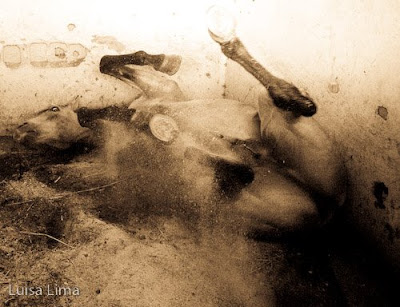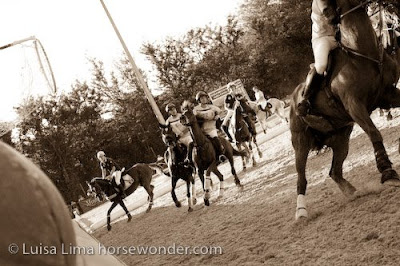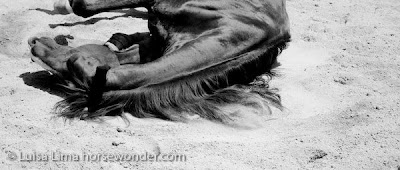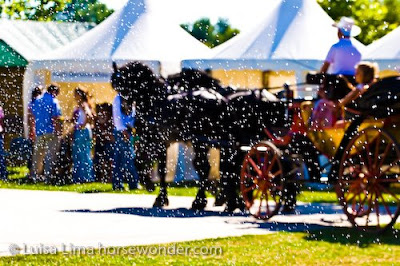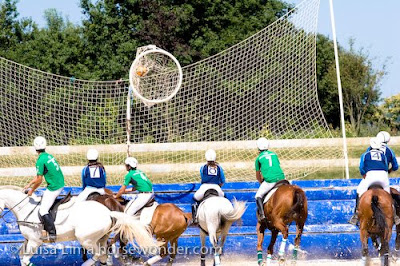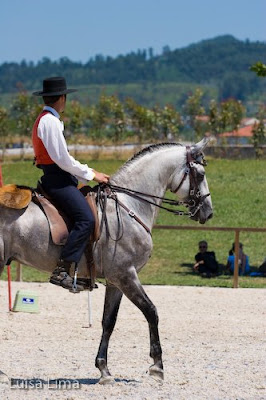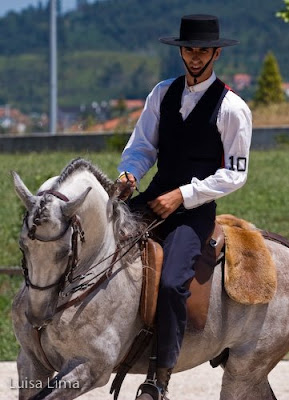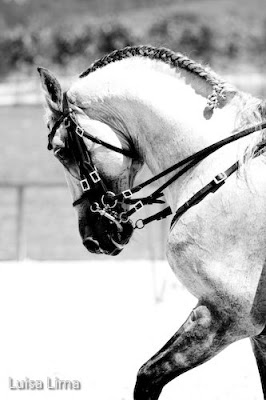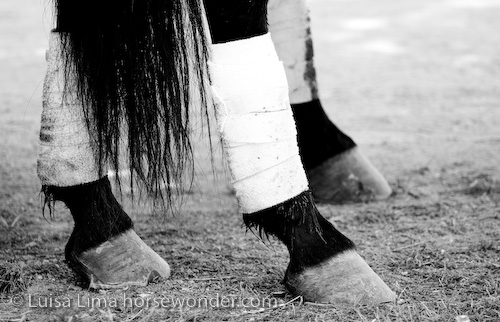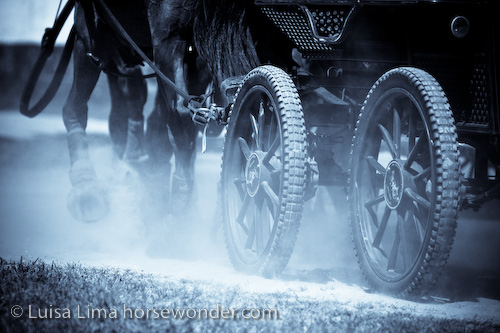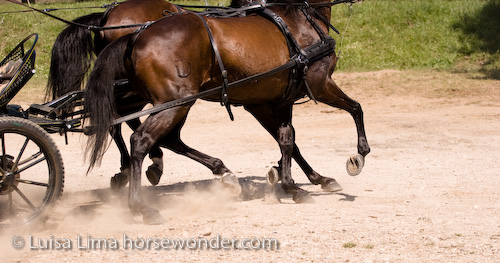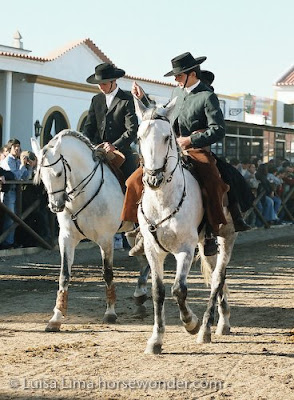
Yesterday I received an unusual request: a mother is sewing a Portuguese Riding Costume for her daughter and wanted to know more about it. Now, I'm not an expert in the Portuguese Riding Costume and I'm a bit new to the "blog world", but from my point of view, this was an interesting example on how the blogging phenomenon can be used to help complete strangers on the other side of the world, or sometimes, even next door! So I did my very best and here are my two cents, illustrated. :-) I'm including pictures of both the female and male riding costumes since there are some common things. So, on to what really matters... There are many creative options for the costume, so I'll start by stating the common things: trousers, white shirt and hat. These are mandatory.

The complete riding costume also includes a jacket (called "jaqueta" in Portuguese) and a vest wore underneath (called "colete" in Portuguese). Many people don't wear the jacket when it's too hot, for obvious reasons. In that case the vest should always be worn instead.

Most people use a very thick "fazenda" jacket, called "samarra", when it's too cold. It's a traditional jacket from Alentejo and the collar is usually made of fox fur, or an imitation. It can be either very long or waist-level.
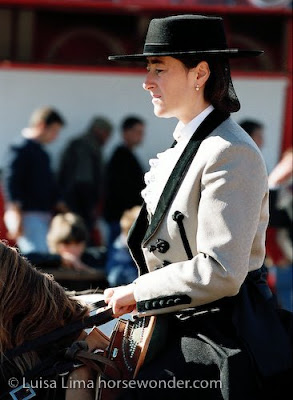
The fabric of the costume is called "fazenda", and it can be thicker or thinner according to the part of the outfit. The most common colours are black, grey, brown and dark blue, although some (mostly girls) use dark bordeaux and beige as well. Most people use the same colour for the jacket and pants, but some people choose to wear different colours, such as in the photo above.
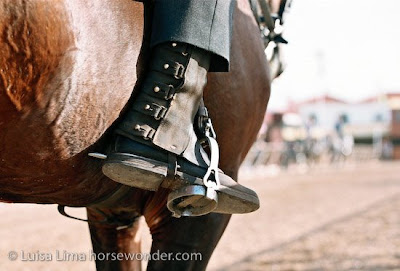
Both men and women commonly wear short boots and chaps. These can be one of two kinds: the so-called “chaps with nails” (“polainas de pregos”, shown in the picture above), which are traditionally used in tauromachy environments, and the true “Portuguese chaps” (polainas à Portuguesa), which are tied on the sides with thin leather shoestrings. Portuguese boots feature a slightly taller heel than traditional riding boots, as well as a slightly larger sole to form a slot where the spur rests. Full length boots are also seen but more rare nowadays.

The main difference between the male costume and the female's is that the female's includes a skirt that is completely "cut" in half in the front. This is so that it opens and allows the woman to sit in the saddle, as shown in the picture above. Suspenders are used to join the pants and skirt together. Men usually wear suspenders as well since the only belt used with the costume is a silk belt for decorative purposes (called "faixa" in Portuguese).

Both men and women's costumes feature fabric ornaments and fabric buttons in the jacket (the jacket is never completely closed), called "alamares" in Portuguese.
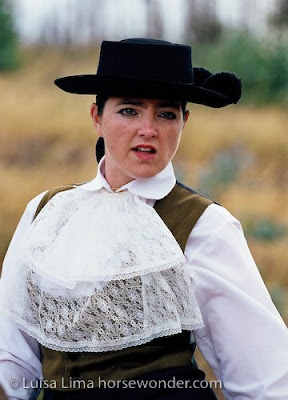
The women's hat is different from the men's since it usually has "ponpons". Many people buy their hats at "Chapelaria Coelho", in the small village of Golegã in Portugal. The hat is usually made of rabbit fur. The shirt can have more or less lace (called "renda" in Portuguese), according to each person's taste.

The hair of the women is usually braided or wrapped into a bun and then covered with a net. The earrings can be either simple pearls or "arrecadas de viana". The latter are made in gold and they have their origin in the Portuguese city Viana do Castelo. Some images are available in this link for the
Museu Ourivesaria Freitas.

For those who want to know more, I recommend the bilingual book "O Traje Português de Equitação - The Portuguese Riding Costume", by Lina Gorjão Clara and João Gorjão Clara, 1995. It's written in Portuguese and English and it has multiple illustrations of the endless possibilities of the costume.

(Pictures taken at Golegã, Portugal, Alenquer, Portugal, and Algarve, Portugal, in public horse fairs, from 2000 to 2005).
